I Walked with a Zombie may be the best movie with the dumbest title in motion picture history. Cranked out by b-movie horror unit at RKO pictures in 1943, this low budget gem is far better than you might expect.
This was the second in a strong of really good low-key horror movie produced under the supervision of Val Lewton, one of filmland’s most underappreciated artists.
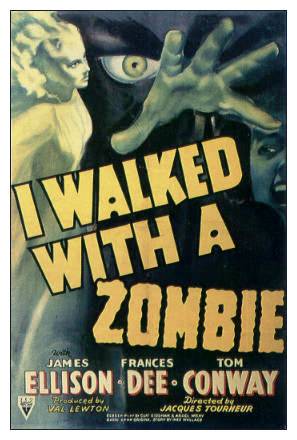 RKO had two rules he had to follow. One, he had to produce his films on a small budget. Two, he had to use titles the studio’s marketing department had already dreamed up and tested. The studio didn’t care about the actual plots, as long as Lewton used the titles.
RKO had two rules he had to follow. One, he had to produce his films on a small budget. Two, he had to use titles the studio’s marketing department had already dreamed up and tested. The studio didn’t care about the actual plots, as long as Lewton used the titles.
So after they saddled Lewton with The Cat People and he turned that title into a really great horror movie, they gave him an even sillier title for his follow-up.
I Walked with a Zombie concerns a young nurse (Frances Dee) who arrives at a sugar plantation on the Caribbean island of Saint Sebastian. She is to care for the invalid wife of the plantation’s owner, played by Tom Conway. The wife appears near catatonic and is given to taking silent, dreamlike walks at night. The local legend is that the wife is not sick, but actually dead and returned to life as a zombie by the island’s voodoo practitioners.
Mousketeer Roll Call: Darlene Gillespie
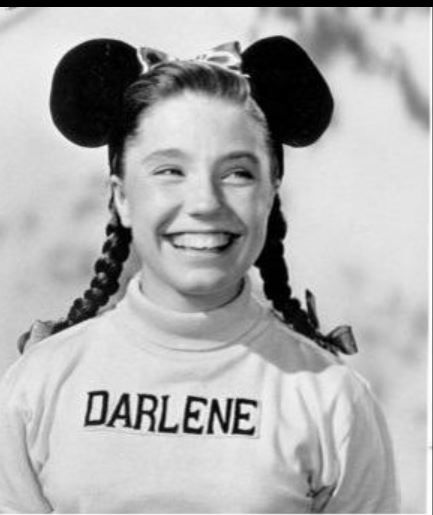 The story of Darlene Gillespie is not one that would lend itself to a Disney movie.
The story of Darlene Gillespie is not one that would lend itself to a Disney movie.
She was the daughter of a Canadian song and dance team. In 1943, her parents relocated to the Los Angeles area when Darlene was just two and began grooming her for a career in show business. By 1955, she was already an accomplished singer and dancer. She passed her audition for The Mickey Mouse Club and became one of the core cast members who stayed with the show during its entire first run.
What we at home never knew is that she was involved in an intense backstage rivalry with Annette Funicello. Dueling sets of stage parents put their friends and relatives up to flooding the Disney studio with fan mail for each of the respective girls. While Darlene did get to star in one of the Mousketeer serials (“Corky & White Shadow”) and play a major part in the second “Spin & Marty” serial, as the show progressed (along with Annette’s bustline), it became obvious who was the top Mousketeer.
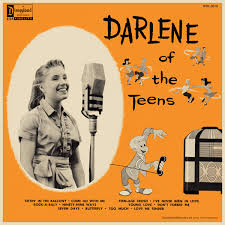 Gillespie did cut a couple of albums for Disney, just like Funicello, but they didn’t receive the push from Disney’s marketing arm that Annette got.
Gillespie did cut a couple of albums for Disney, just like Funicello, but they didn’t receive the push from Disney’s marketing arm that Annette got.
When The Mouse Club ceased production, Disney kept Annette under contract, but Darlene had to go her own way. Her acting career quickly fizzled. Over the years, she made a few stabs at re-launching a singing career, but nothing really came of those.
Darlene worked for many years as a nurse and, in fact, greatly assisted her fellow Mousketeer Karen Pendleton when Karen had the car accident that left her paralyzed from the waist down.
Sadly, her last bit of notoriety came in 1998 when she was arrested in a securities fraud scheme that she cooked up with her husband. Darlene was sentenced to two years in prison, but wound up only doing 3 months. In 2005, she and her husband were back in court on charges of fraud. Those charges were eventually dropped. The husband who landed her in the slammer passed away in 2008.
Darlene is still with us, living in relative anonymity having finally reached a financial settlement with the Disney Company after a years-long battle over royalties she claimed she was owed for her work on that TV show. Sadly, that protracted legal battle led to an estrangement with the rest of the surviving Mousketeers.
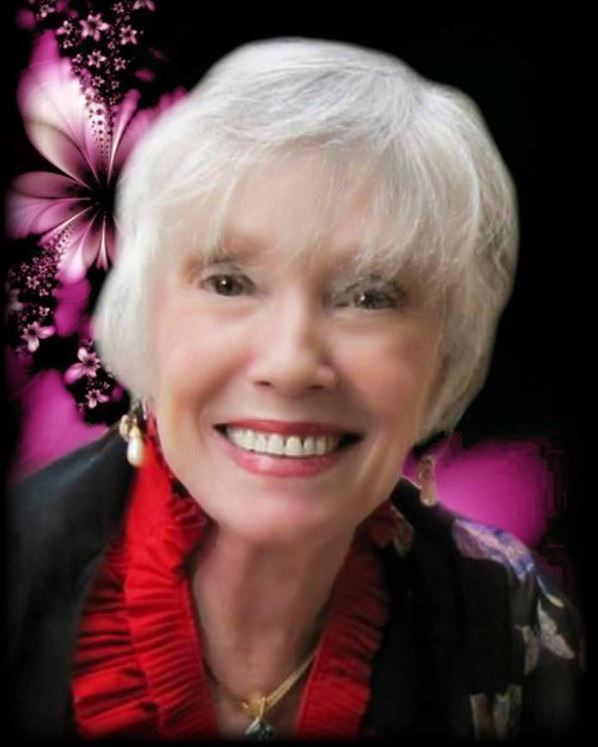
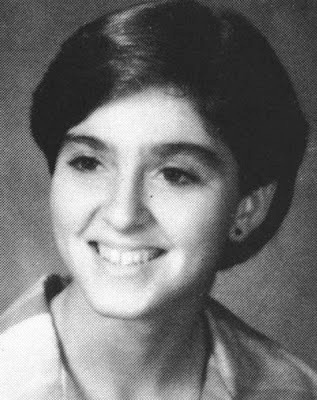
Even the biggest of American pop stars were nerdy teenagers at one time and had to pose for yearbook photos.
And so this is what Madonna looked like in her pre-Material Girl days.
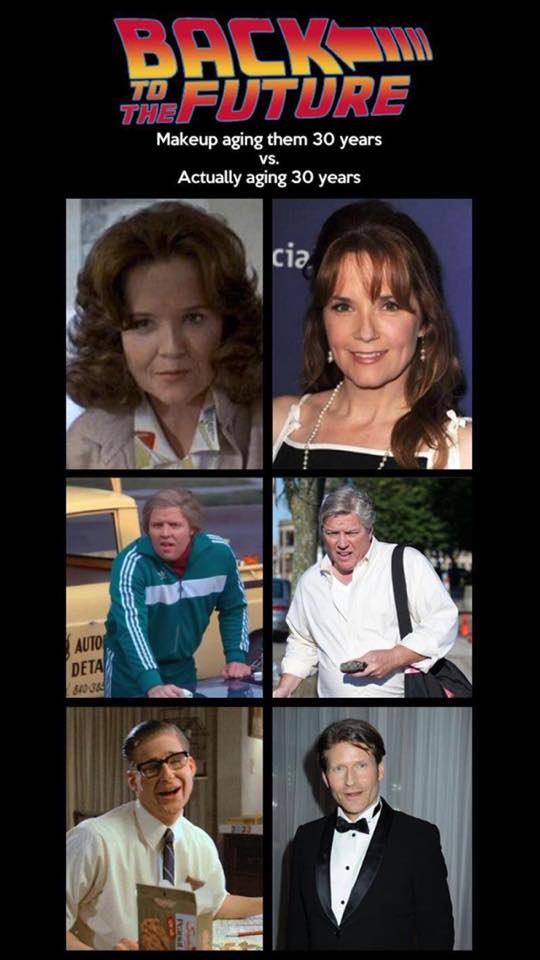 As these photos prove, the make-up team on Back to the Future got things pretty close when it came to aging their stars (except Lea Thompson is far prettier than they made her appear).
As these photos prove, the make-up team on Back to the Future got things pretty close when it came to aging their stars (except Lea Thompson is far prettier than they made her appear).
Thomas Wilson and Crispin Glover are pretty darn close.
We'd have a Pepsi Free in their honor (if we could find one).
Okay, now here's an even more recent photo of Michael J. Fox, Thomas Wilson, Christopher Lloyd and Lea Thompson.
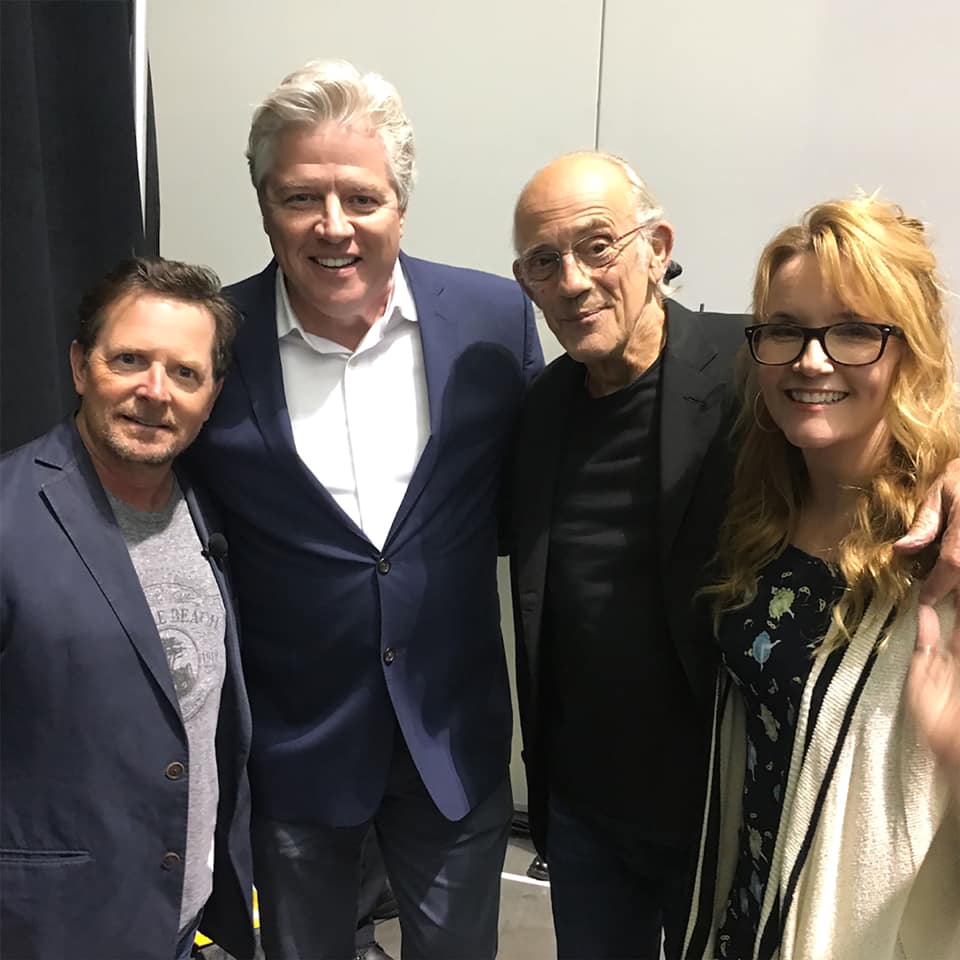
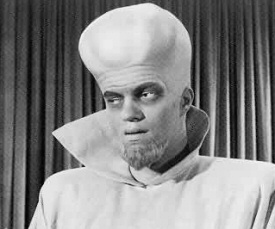 Richard Kiel the 7'2" actor best remembered for playing the villainous "Jaws" in 3 James Bond films has passed away just three days shy of his 75th birthday.
Richard Kiel the 7'2" actor best remembered for playing the villainous "Jaws" in 3 James Bond films has passed away just three days shy of his 75th birthday.
In addition to the Bond villains, Boomers will also remember Kiel as the giant alien in the classic Twilight Zone episode "To Serve Man." He also menaced Gene Wilder and Richard Pryor in the film Silver Streak.
 Like to enjoy a night at the movies with your sweetie without taking out a second mortgage? If you live in a major market area, there’s an easy way to access those free tickets the studios always make available for sneak preview screenings.
Like to enjoy a night at the movies with your sweetie without taking out a second mortgage? If you live in a major market area, there’s an easy way to access those free tickets the studios always make available for sneak preview screenings.
Just go to gofobo.com or getscreenings.com for a list of all the upcoming previews in your area as well as links that can qualify you for the freebies. You’re welcome.
Image courtesy of Salvatore Vuono at FreeDigitalPhotos.net
 Lorem ipsum dolor sit amet, consectetur adipiscing elit. Donec sit amet nibh. Vivamus non arcu. Lorem ipsum dolor sit amet, consectetur adipiscing elit. Etiam dapibus, tellus ac ornare aliquam, massa diam tristique urna, id faucibus lectus erat ut pede. massa diam tristique urna,
Lorem ipsum dolor sit amet, consectetur adipiscing elit. Donec sit amet nibh. Vivamus non arcu. Lorem ipsum dolor sit amet, consectetur adipiscing elit. Etiam dapibus, tellus ac ornare aliquam, massa diam tristique urna, id faucibus lectus erat ut pede. massa diam tristique urna,
Pop Up Player
Latest Posts–Movies & TV
-
Mr. Magoo's Christmas Carol
What was the first made-for-TV animated holiday special? Oh, alright. The title of this post sort of gives it away. Yes, before Rudolph the Red-Nosed Reindeer, before A Charlie Brown Christmas, there was Mister Magoo’s…
-
6 Things You Didn’t Know About “Leave It to Beaver”
Why did June Cleaver always wear high heels & pearls when performing household chores? The heels actually started in the second season – and for a very good reason. Her boys were growing taller and…
-
The Untold Secrets of Tom Terrific
If you were a kid growing up in the late 1950s and early 60s, odds are good to certain you started your weekday with Captain Kangaroo on CBS. Beginning in 1957, the Captain added a…
-
The TV That Time Forgot: Fireball XL5
The Baby Boom, television, and space exploration all got started at roughly the same time. By the sixties, astronauts had already gone up in rockets, and the spaceman hero was gradually replacing the cowboy as…
-
The TV That Time Forgot: Hawaiian Eye
In show biz, imitation may not be the sincerest form of flattery, but it is the most predictable. When 77 Sunset Strip was a rating success in the 1958 -59 TV season, Warner Brothers immediately…
-
Does Father Know?
Early in her career, actress Elinor Donahue actually dyed her dark brown hair blond and posed for what were then the near-obligatory cheesecake photos expected of every young starlet. Just don’t tell Jim Anderson. We’re…



